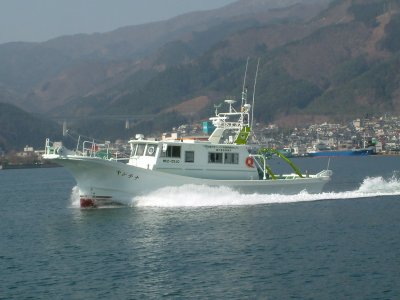English follows Japanese
道東の景観(北海道研究林・標茶区、北海道標茶町)
Drone Landscape of East Hokkaido (Shibecha Branch, Hokkaido Forest Research Station, Shibecha town, Hokkaido)
北海道研究林(標茶区)の上空でドローン撮影。研究林は根釧台地上に位置しており、右上にみえる摩周岳(カムイヌプリ)からの噴火堆積物が厚く堆積した平坦な地形が広がる。黄色く色づき始めた針葉樹がカラマツ人工林、濃い緑の針葉樹がトドマツやアカエゾマツの人工林である。天然林はミズナラをはじめとした落葉広葉樹からなり、針葉樹を含まない。研究林を取り囲むように牧草地が広がっている。
The station is located on the Konsen Plateau which is topographically flat and formed of thick tephra layers derived from the Mashu volcano. The vegetation of the station includes natural deciduous broad-leaved forest and coniferous plantations, which were surrounded by open pastures.
檜皮(ひわだ)の森(徳山試験地、山口県周南市)
Japanese Cypress Forest for Hinoki Bark (Hiwada) Thatching (Tokuyama Experimental Station, Shunan city, Yamaguchi)
試験地のヒノキ林は、文化財に指定されている神社仏閣の屋根を葺くための檜皮を採取する森として維持管理されている。樹齢80年以上のヒノキからおよそ10年ごとに檜皮を採取することができ、以後100年以上にわたって檜皮を生産し続ける持続可能な森林利用の現場である。
Japanese cypress forest in the Tokuyama Experimental Station has been managed for Hinoki bark (Hiwada) thatching of shrines and temples designated as national cultural assets of Japan. Hiwada can be repeatedly harvested from Hinoki tree (>80 years old) every 10 years for more than 100 years. Tokuyama Experimental Station offers the field site for the sustainable use of forest resources.
魚類標本コレクション(舞鶴水産実験所、京都府舞鶴市)
Fish Collection(Maizuru Fisheries Research Station, Maizuru city, Kyoto)
大学の魚類標本コレクションとしては日本一の40万点の標本を保管している。質・量ともに優れた魚類標本は、分類学、系統学、形態学的研究に幅広く用いられ、毎年国内外の多くの研究者が標本観察のために訪れる。
Maizuru Fisheries Research Station holds about 400,000 fish specimens, the largest fish collection among university museums in Japan. Many research biologists come from various countries to examine the specimens in high quality and quantity, and the collection has significantly contributed to the studies of taxonomy, phylogeny, and morphology.
実習研究船ヤンチナ(瀬戸臨海実験所、和歌山県白浜町)
Research/Training Boat Janthina(Seto Marine Biological Laboratory, Shirahama town, Wakayama)
実習研究船ヤンチナ(総トン数12トン、実習生定員24名、乗組員2名)は2008年3月に竣工した。船は学生の研究や実習に利用することができる。船名は浮遊性の巻貝アサガオガイの学名にちなんで名づけられた。
The research/training boat Janthina (gross tonnage of 12, 26 passenger capacity) was completed in March 2008. It is used as a facility for students to conduct research studies and to receive practical training. The boat was named after the bubble-rafting violet snail Janthina janthina.
※イチ押し!情報については、各施設へお問い合わせ願います。





